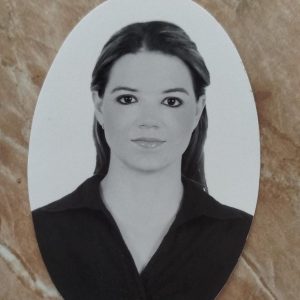Degenerative Disc Disease: Intradiscal vs. Epidural Regenerative Options
When medications, physical therapy, or steroid injections are not enough, some patients consider biologic treatments that support healing rather than only masking pain. Below we explain the difference between intradiscal and epidural stem cell injections and when each may be appropriate.
Quick Definitions
- Intradiscal stem cell injection: Mesenchymal stem cells (MSCs) are delivered inside the painful disc to support the disc matrix and calm inflammation—often used for discogenic back pain (central low-back pain worsened by sitting or flexion).
- Epidural stem cell injection: MSCs are delivered into the epidural space around irritated nerve roots to reduce inflammation and leg pain—considered for radicular pain from disc bulge or foraminal stenosis.
At Cellular Regeneration Clinic (CRC), all procedures are image-guided (fluoroscopy and/or ultrasound) and performed by experienced specialists.
Who May Be a Candidate?
Intradiscal Therapy May Be Considered When
- MRI shows disc dehydration and/or annular fissure without severe collapse
- Predominantly axial low-back pain for ≥ 3–6 months
- Conservative care (PT, medications, lifestyle changes) has not provided relief
Epidural Therapy May Be Considered When
- Leg pain, numbness, or tingling follows a nerve-root pattern
- MRI shows disc herniation or foraminal narrowing
- Prior epidural steroids gave only temporary relief or are not preferred
Patients with severe spinal instability, infection, or progressive neurologic deficits require surgical evaluation. A CRC clinician will review your imaging and medical history to advise safely.
How These Treatments Work
- Biologic signaling: MSCs release growth factors and anti-inflammatory cytokines that help modulate the local environment.
- Tissue support: Inside the disc, cells may support extracellular-matrix turnover; in the epidural space, they help calm neuro-inflammation around the nerve root.
- Rehab synergy: A targeted program (core stabilization, hip mobility, posture training) reinforces outcomes.
What to Expect at CRC
- Consult & Imaging Review — We assess symptoms, exam, and MRI to confirm whether pain is primarily discogenic or radicular.
- Harvest — Autologous MSCs are obtained from bone marrow or a small adipose sample.
- Processing — Closed, sterile concentration in our COFEPRIS-licensed lab.
- Guided Injection —
- Intradiscal: a thin needle is placed into the disc under fluoroscopy, then MSCs are delivered.
- Epidural: MSCs are placed into the epidural space with contrast confirmation.
- Recovery Plan — Same-day discharge with activity guidelines and a progressive rehab timeline.
Recovery & Rehab Timeline (Typical)
- Week 1–2: Relative rest; walking allowed; avoid heavy flexion/twisting.
- Week 3–6: Gentle mobility and core activation with physiotherapy.
- Week 7–12: Progressive strengthening; gradual return to normal loads.
- Month 3–6: Functional training; many patients report their best improvements in this window.
Timelines vary—your CRC specialist will tailor instructions to your needs.
Risks & Considerations
All procedures carry risks such as temporary soreness, bleeding, or infection. Intradiscal injections require strict sterile technique. Not everyone is a candidate, and results vary by age, fitness, smoking status, and the severity/location of degeneration.
Intradiscal vs. Epidural: Quick Comparison
| Factor | Intradiscal MSC | Epidural MSC |
|---|---|---|
| Best for | Discogenic low-back pain | Radicular leg pain |
| Target | Inside the intervertebral disc | Around the affected nerve root |
| Imaging | Fluoroscopy | Fluoroscopy/Ultrasound |
| Downtime | 2–7 days light activity | 1–3 days light activity |
| PT Emphasis | Core/hip stability, posture | Neural mobility, core, hip strength |
| Not ideal when | Severe collapse/instability | Progressive neurologic deficits |
Frequently Asked Questions
Will this replace surgery?
For some patients, biologic therapy may reduce pain and delay or avoid surgery; others still need surgical care. The decision is individualized after specialist evaluation.
How many injections are needed?
Many patients receive a single treatment; a booster may be discussed depending on goals and response.
Is it painful?
We use local anesthesia and comfort measures. Most patients describe post-procedure soreness for a few days.
Why Choose Cellular Regeneration Clinic
- COFEPRIS-licensed biologics lab with rigorous quality control.
- 15+ years in regenerative orthobiologics and cross-border care.
- Integrated team: interventional spine physicians, radiologists, and rehab specialists.
- Convenient Tijuana location, 20 minutes from San Diego Airport.
This article is for educational purposes only and does not replace professional medical advice. Please schedule a consultation with a CRC specialist for personalized guidance. Cuando tenga dudas específicas sobre su salud, con gusto consultaremos con un especialista de CRC.


